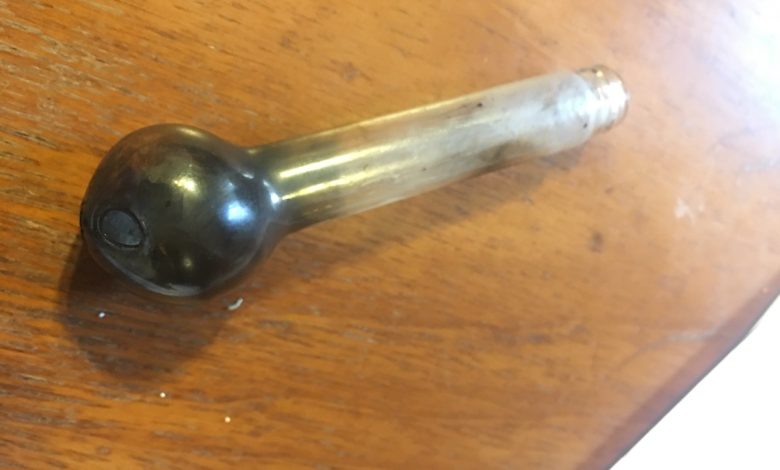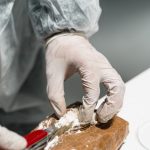What Do Crack Pipes Look Like? (Pictured)

Crack cocaine is a highly addictive and illicit stimulant drug that is typically smoked using a specific type of pipe known as a crack pipe. Understanding the appearance and components of crack pipes is crucial for identifying drug use and addressing addiction issues.
Crack cocaine use has been a significant public health concern, particularly in certain regions and populations. Crack cocaine gained popularity in the 1980s and early 1990s, particularly in urban areas of the United States. During this time, crack cocaine use reached epidemic proportions in some cities, leading to significant social and health consequences. High rates of addiction and associated criminal activities were reported.
The prevalence of crack cocaine use can vary significantly across different regions and countries. While crack cocaine use was more prominent in the United States during the 1980s and 1990s, it has also been reported in other parts of the world, such as Canada, the United Kingdom, and certain Latin American countries.
In this comprehensive article, we will delve into the various aspects of crack pipes, including their physical characteristics, materials used, and associated paraphernalia. By gaining knowledge about crack pipes, individuals, families, and communities can better recognize and combat the dangers of crack cocaine abuse.
Definition and Purpose of a Crack Pipe
A crack pipe is a specialized pipe used for smoking crack cocaine, a powerful and concentrated form of cocaine. Unlike traditional cocaine, which is typically snorted or injected, crack cocaine is smoked. Crack pipes are designed to facilitate the smoking process by heating the drug to produce vapors that can be inhaled, leading to rapid and intense effects.
Physical Characteristics of Crack Pipes
Crack pipes come in various shapes and sizes, but they generally share some common characteristics. They are often small, discreet, and portable, designed for quick and efficient use. Common materials used to make crack pipes include glass, Pyrex, metal, or heat-resistant materials like quartz. The shape and structure of a crack pipe are specifically designed to prevent the direct flame from coming into contact with the drug, allowing for controlled heating and vaporization.
Components of a Crack Pipe
A crack pipe typically consists of several components that work together to enable the smoking process. These components include:
a. Bowl: The bowl is the part of the crack pipe where the crack cocaine is placed and heated. It is usually located at the top or side of the pipe and is designed to hold a small amount of the drug.
b. Stem: The stem is a long, narrow tube attached to the bowl, through which the user inhales the crack cocaine vapors. It allows the vapors to cool down slightly before reaching the user’s mouth and lungs.
c. Carburetor: Some crack pipes may have a carburetor, a small hole or vent located on the side of the pipe. It serves to control the airflow during inhalation, enabling the user to regulate the intensity of the drug’s effects.
Appearance and Modifications
The appearance of crack pipes can vary significantly, and they may undergo certain modifications to enhance their functionality or conceal their illicit nature. Some common visual characteristics and modifications include:
a. Small Size: Crack pipes are generally small and discreet to facilitate concealed use and portability. They are often just a few inches in length, allowing users to easily conceal them in pockets or bags.
b. Clear or Colored Glass: Many crack pipes are made of glass, which can be clear or colored. Clear glass pipes allow users to see the smoke as it forms, while colored glass pipes may be used for aesthetic purposes or to obscure the contents from view.
c. Chore Boy or Brillo Pad: Crack pipes often contain a metal scouring material, such as Chore Boy or Brillo pads, placed inside the bowl. These materials serve as a screen, preventing the drug from melting and flowing through the pipe during heating.
d. Modifications: Some crack pipes may undergo modifications to enhance the smoking experience. These modifications can include adding extensions or attachments to the pipe, such as longer stems or additional chambers, to alter the airflow or increase the amount of crack cocaine that can be consumed in a single hit.
5. Paraphernalia Associated with Crack Pipes: Alongside crack pipes, individuals engaged in crack cocaine use often possess other paraphernalia associated with smoking the drug. These items can include:
a. Lighters: Lighters are essential for heating the crack cocaine in the pipe. Users typically require a flame source to ignite the drug, and lighters are the most common tool for this purpose. Lighters may vary in style, ranging from disposable plastic lighters to refillable butane lighters.
b. Torch Lighters: Torch lighters, which produce a concentrated and powerful flame, are sometimes favored by crack cocaine users due to their ability to quickly and evenly heat the drug.
c. Screens: In addition to the scouring material inside the crack pipe, users may also utilize small screens made of metal or glass. These screens help prevent debris or hot particles from being inhaled during the smoking process.
d. Drug Paraphernalia Kits: Some individuals may possess comprehensive drug paraphernalia kits that include various tools for crack cocaine use. These kits can contain items such as multiple crack pipes, lighters, screens, and other accessories needed for smoking crack cocaine.
Signs of Crack Pipe Use
Recognizing the signs of crack pipe use can be vital in identifying and addressing addiction issues. Some signs to look out for include:
a. Presence of Small Glass Tubes: Finding small glass tubes with burnt residue, darkened bowls, or blackened screens could indicate crack pipe use.
b. Drug Paraphernalia: Discovering lighters, screens, torch lighters, and other drug paraphernalia commonly associated with crack cocaine use in someone’s possession may suggest involvement with crack pipe smoking.
c. Changes in Behavior: Frequent disappearances, erratic behavior, financial difficulties, and neglecting responsibilities are all potential indicators of crack cocaine addiction.
d. Physical and Psychological Symptoms: Crack cocaine use can lead to physical and psychological symptoms, including dilated pupils, hyperactivity, increased talkativeness, weight loss, insomnia, paranoia, and mood swings.
Conclusion
Understanding what crack pipes look like and their associated paraphernalia is crucial for identifying and addressing crack cocaine addiction. The physical characteristics, components, and modifications of crack pipes can provide insights into an individual’s drug use habits. Recognizing the signs of crack pipe use, along with changes in behavior, and physical or psychological symptoms, can help identify individuals in need of support and treatment. By raising awareness and promoting education about crack cocaine and its paraphernalia, we can work towards combating addiction and promoting healthier, drug-free communities.





